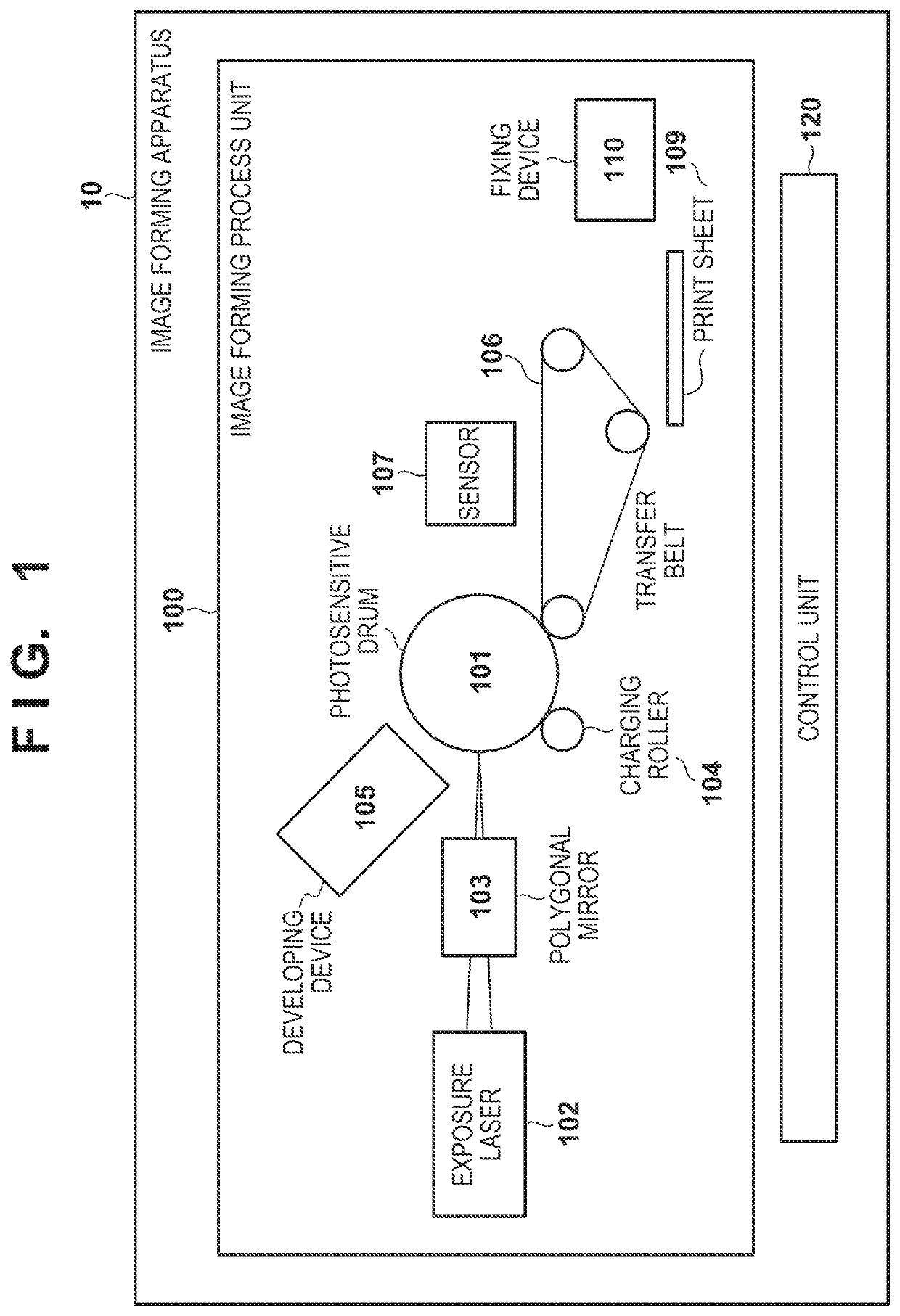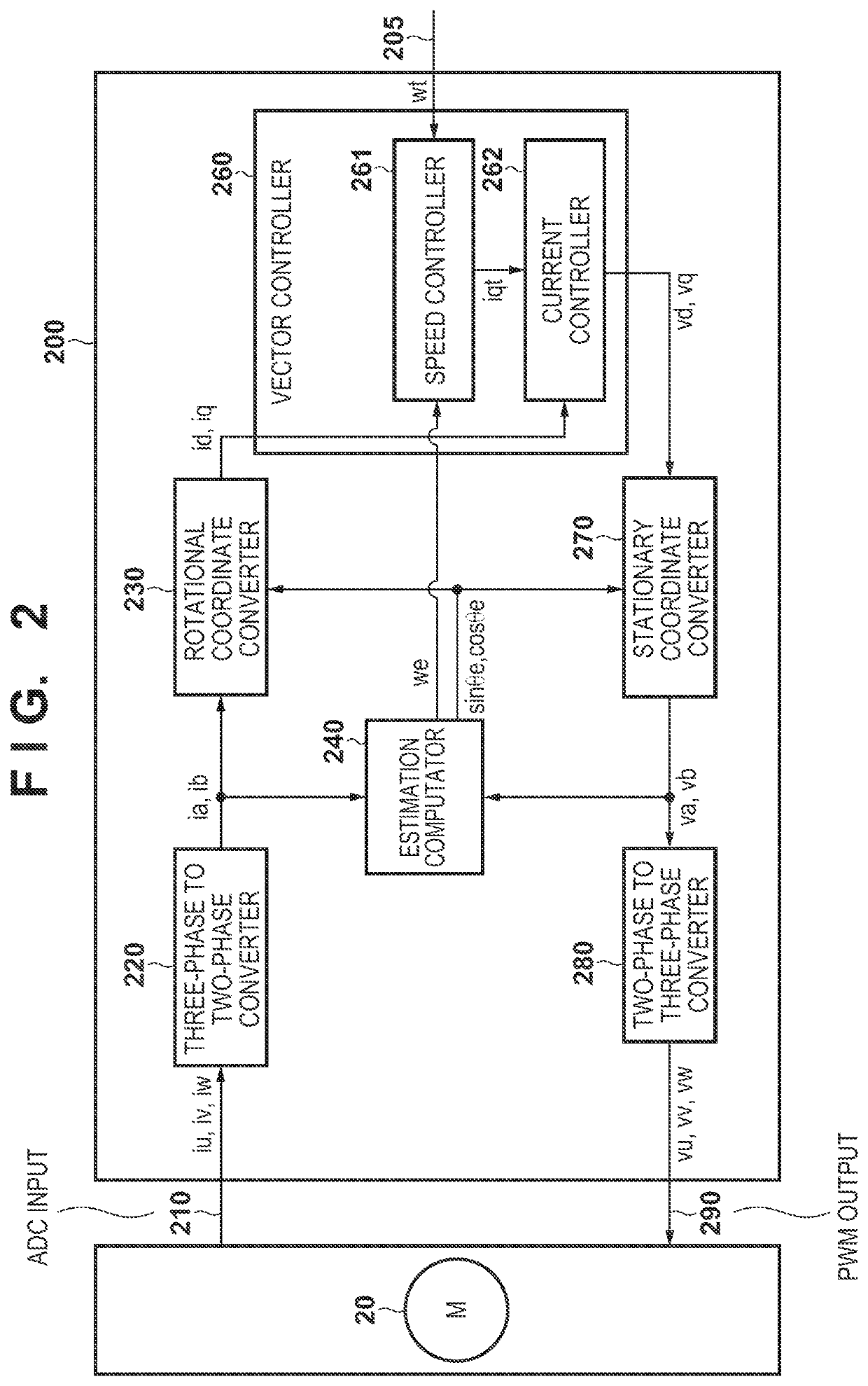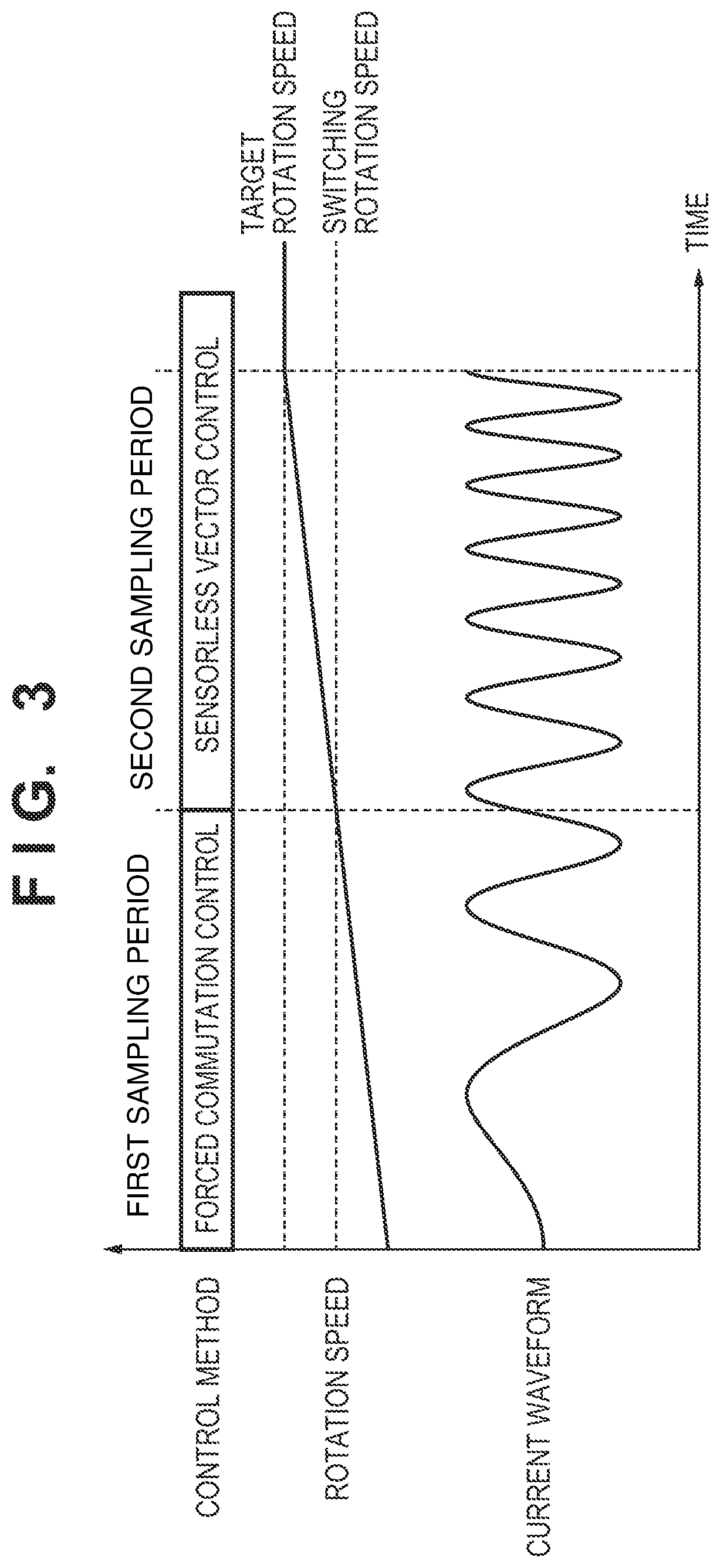Motor control apparatus and method of controlling the same
a motor control and motor technology, applied in the direction of dynamo-electric converter control, dynamo-electric gear control, dynamo-electric brake control, etc., to achieve the effect of high accuracy and shortening the activation tim
- Summary
- Abstract
- Description
- Claims
- Application Information
AI Technical Summary
Benefits of technology
Problems solved by technology
Method used
Image
Examples
first embodiment
[0019]Description is given below by taking, as an example, an electrophotographic method image forming apparatus as a first embodiment of a motor control apparatus according to the present invention.
[0020]
[0021]FIG. 1 is a view that exemplarily illustrates a configuration of an image forming apparatus 10 according to a first embodiment. The image forming apparatus 10 is configured by an image forming process unit 100 and a control unit 120.
[0022]The image forming process unit 100 is configured by a photosensitive drum 101 as an image carrier, an exposure laser 102, a polygonal mirror 103, a charging roller 104, a developing device 105, a transfer belt 106, a sensor 107, and a fixing device 110.
[0023]An outline regarding a series of processes for image forming by the image forming process unit 100 will be given. Firstly, the surface of the photosensitive drum 101 is charged by the charging roller 104, and the exposure laser 102 irradiates, via the polygonal mirror 103, the photosensi...
second embodiment
[0057]In the second embodiment, description is given regarding a method for switching control in a stepwise fashion. More specifically, a time period for PI (proportional-integral) control in accordance with reading of a motor current value is provided between a time period for forced commutation control and a time period for sensorless vector control in the first embodiment. Note that description is omitted for configurations similar to those in the first embodiment (FIG. 1 through FIG. 6).
[0058]
[0059]FIG. 7 is a view for describing a control mode of the motor in the second embodiment. A graph 700a illustrates timings of each process in “forced commutation control” which is a first control. A graph 700b illustrates timings of each process in “PI control” which is a second control. Note that description is omitted for sensorless vector control as it is the same as in the first embodiment (the graph 600a).
[0060]“Forced commutation control” is a control method for making a control per...
third embodiment
[0065]In the third embodiment, description is given regarding another method for switching control in a stepwise fashion. More specifically, a time period for “PI control+α” is provided between the time period for PI control and the time period for sensorless vector control in the second embodiment. Here, the “α” indicates one or more extra processing. Note that description is omitted for configurations similar to that in the embodiments described above (FIG. 1 through FIG. 7).
[0066]FIG. 8 is a view for describing a control mode of the motor in the third embodiment. A graph 800a illustrates timings of each process in “PI control” which is a second control, and is similar to the graph 700b. A graph 800b illustrates timings of each process in “PI control+α” which is a third control. Note that description is omitted for sensorless vector control as it is the same as in the first embodiment (the graph 600a).
[0067]As described above, “PI control” is a control method for shortening a cont...
PUM
 Login to View More
Login to View More Abstract
Description
Claims
Application Information
 Login to View More
Login to View More - R&D
- Intellectual Property
- Life Sciences
- Materials
- Tech Scout
- Unparalleled Data Quality
- Higher Quality Content
- 60% Fewer Hallucinations
Browse by: Latest US Patents, China's latest patents, Technical Efficacy Thesaurus, Application Domain, Technology Topic, Popular Technical Reports.
© 2025 PatSnap. All rights reserved.Legal|Privacy policy|Modern Slavery Act Transparency Statement|Sitemap|About US| Contact US: help@patsnap.com



